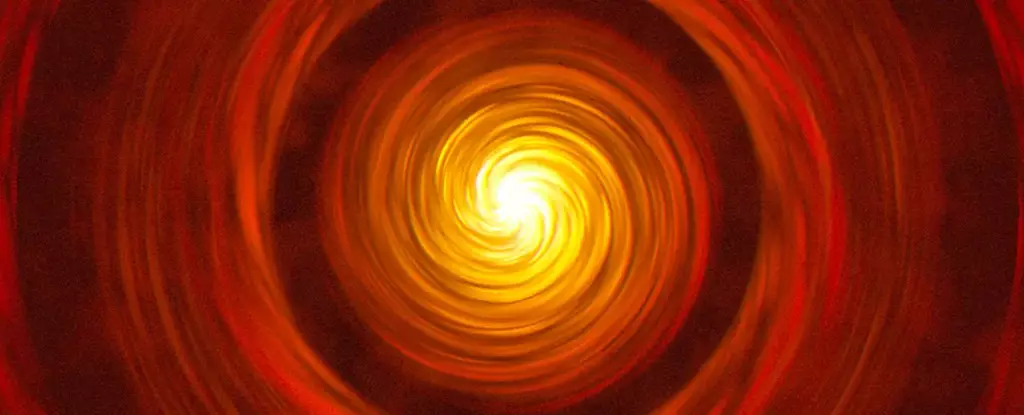The James Webb Space Telescope (JWST) has recently provided astronomers with a significant piece of evidence supporting the long-standing hypothesis on planet formation. This evidence confirms the theory of ‘icy pebble drift,’ which is believed to play a crucial role in the formation of planets like our own. The concept of icy pebble drift can be summarized as follows: as tiny ice-covered particles collide within a young protoplanetary disk located in the outer regions of a star system, they lose momentum. Consequently, these particles gravitate towards the star, settling in a warmer zone where their icy coating vaporizes. This region of fine debris and water vapor then becomes the building blocks for the formation of rocky planets. Despite the neatness of this idea, previous studies using distant starlight to detect water vapor have been inconclusive due to image blurriness. However, utilizing higher-resolution images captured by the JWST’s mid-range infrared camera, an international team of researchers has provided compelling evidence for the existence of icy pebble drift.
The team’s investigation focused on analyzing two distinct types of protoplanetary disks: compact and extended. Compact disks are densely packed, while extended disks consist of multiple rings separated by pressure and gravity. Comparing the data collected from both types of disks, the researchers discovered that icy materials can indeed migrate across protoplanetary disks. However, this process occurs more frequently and efficiently in compact disks. This finding challenges the previous static picture of planet formation, where planets were thought to form only within isolated zones. Instead, these new observations highlight that different zones within protoplanetary disks can interact with one another, shedding light on a phenomenon that may have also occurred within our own Solar System.
The Importance of the Snowline
Within the compact disk, the team observed a greater accumulation of water vapor at the ‘snowline,’ where icy pebbles are expected to lose a significant amount of vapor. This observation supports the idea that building materials can move inward across the disk, a process that is more efficient in compact disks due to the absence of large gaps. As sublimating icy pebbles continually descend from the outer regions, they supply both solid materials and water, ultimately creating the foundation for new planets. This exciting discovery was made possible by the high-resolution and super-sensitive instrumentation on board the JWST, marking a significant leap forward in our understanding of planet formation.
The confirmation of icy pebble drift as a contributing factor in planet formation opens up new avenues for further investigation. Armed with this knowledge, astronomers can now explore this specific process more deeply, enabling a greater understanding of the complex mechanisms involved in the creation of planets. By unraveling the secrets of planet formation, scientists can gain valuable insights into the origins of our own Solar System and potentially discover habitable exoplanets elsewhere in the universe. As astrophysicist Andrea Banzatti from Texas State University explains, “Webb finally revealed the connection between water vapor in the inner disk and the drift of icy pebbles from the outer disk.”
The observations made by the James Webb Space Telescope have provided robust evidence supporting the theory of icy pebble drift, a key aspect of planet formation. Through the analysis of protoplanetary disks, astronomers have discovered that the movement of icy materials occurs more readily in compact disks. This finding challenges the traditional notion of isolated zones for planet formation and suggests that interactions between different regions within a disk are essential. By continuing to investigate this phenomenon, scientists can deepen our understanding of the processes that shape the universe and potentially uncover the secrets of habitable worlds beyond our own. The groundbreaking capabilities of the JWST have propelled our knowledge of planet formation to new heights, paving the way for future discoveries and advancements in astronomy.


Leave a Reply